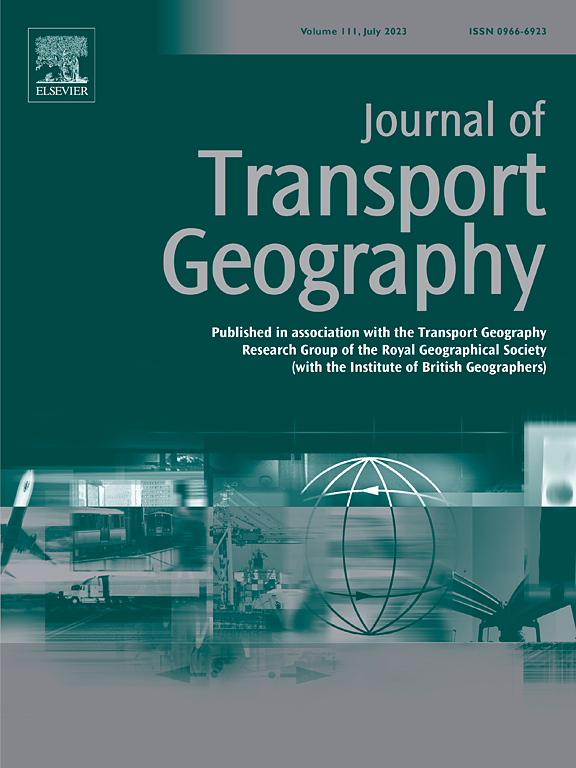Social inclusion in sustainable urban mobility plans (SUMPs): The case of shared mobility in Utrecht, the Netherlands
IF 5.7
2区 工程技术
Q1 ECONOMICS
引用次数: 0
Abstract
This article explores the social inclusiveness of Sustainable Urban Mobility Plans (SUMPs), a policy tool introduced by the European Commission to inspire local governments in developing long-term sustainable visions to address the mobility needs of everyone. The aim of SUMPs is to accelerate the shift to sustainable mobility and achieve the complete decarbonisation of European Mobility by 2050. While the rationale behind SUMPs is that local governments understand the needs of their inhabitants and visitors, concerns have arisen regarding their capacity to recognise socially disadvantaged groups, potentially exacerbating social inequalities. Socially disadvantaged groups are prone to transport poverty, limiting their access to essential services and societal participation. Using a mixed-method approach, we analyse the social inclusiveness of SUMPs, focusing on Utrecht, the Netherlands. We conduct a qualitative analysis of policy documents to provide contextual understanding and assess the inclusion of socially disadvantaged groups within SUMPs. Our findings indicate that SUMPs recognise diverse social groups, including individuals with disabilities, children, older adults, and low-income groups, and acknowledge shared mobility as a tool to reduce transport poverty. We then develop a social indicator based on the identified socially disadvantaged groups to compare their distribution with the availability of shared mobility services. These are mapped for both 2019 and 2023, drawing on the municipality of Utrecht's 2020 action plan for shared mobility, which explicitly emphasises the role of shared mobility in reducing transport poverty by improving their availability for socially disadvantaged groups. Our study highlights that neighbourhoods with low social indicators are concentrated in the outskirts of the city, whereas shared mobility services are predominantly available in the city centre. Consequently, the ambition outlined in the documents regarding shared mobility's potential to reduce transport poverty has not yet materialized in the real world. This study provides insight into the capacity of SUMPs to address social inclusion issues, offering valuable guidance for the development of effective and socially inclusive sustainable mobility policies in European cities.
可持续城市交通计划中的社会包容:以荷兰乌得勒支的共享交通为例
本文探讨了可持续城市交通计划(SUMPs)的社会包容性,这是欧盟委员会引入的一项政策工具,旨在激励地方政府制定长期可持续的愿景,以满足每个人的交通需求。SUMPs的目标是加速向可持续交通的转变,并在2050年之前实现欧洲交通的完全脱碳。虽然地方政府了解当地居民和游客的需求,但人们担心他们是否有能力认识到社会弱势群体,这可能会加剧社会不平等。社会弱势群体容易陷入交通贫困,限制了他们获得基本服务和社会参与的机会。采用混合方法,我们分析了sump的社会包容性,重点是荷兰乌得勒支。我们对政策文件进行定性分析,以提供上下文理解并评估在sump中纳入社会弱势群体的情况。我们的研究结果表明,sump承认不同的社会群体,包括残疾人、儿童、老年人和低收入群体,并承认共享流动性是减少交通贫困的一种工具。然后,我们根据确定的社会弱势群体开发了一个社会指标,将其分布与共享移动服务的可用性进行比较。根据乌得勒支市2020年共享交通行动计划,绘制了2019年和2023年的地图,该计划明确强调了共享交通在通过改善社会弱势群体的可用性来减少交通贫困方面的作用。我们的研究强调,社会指标较低的社区集中在城市的郊区,而共享移动服务主要在市中心提供。因此,文件中概述的关于共享交通减少交通贫困潜力的雄心壮志尚未在现实世界中实现。本研究提供了sump解决社会包容问题的能力,为欧洲城市制定有效和社会包容的可持续交通政策提供了有价值的指导。
本文章由计算机程序翻译,如有差异,请以英文原文为准。
求助全文
约1分钟内获得全文
求助全文
来源期刊

Journal of Transport Geography
Multiple-
CiteScore
11.50
自引率
11.50%
发文量
197
期刊介绍:
A major resurgence has occurred in transport geography in the wake of political and policy changes, huge transport infrastructure projects and responses to urban traffic congestion. The Journal of Transport Geography provides a central focus for developments in this rapidly expanding sub-discipline.
 求助内容:
求助内容: 应助结果提醒方式:
应助结果提醒方式:


